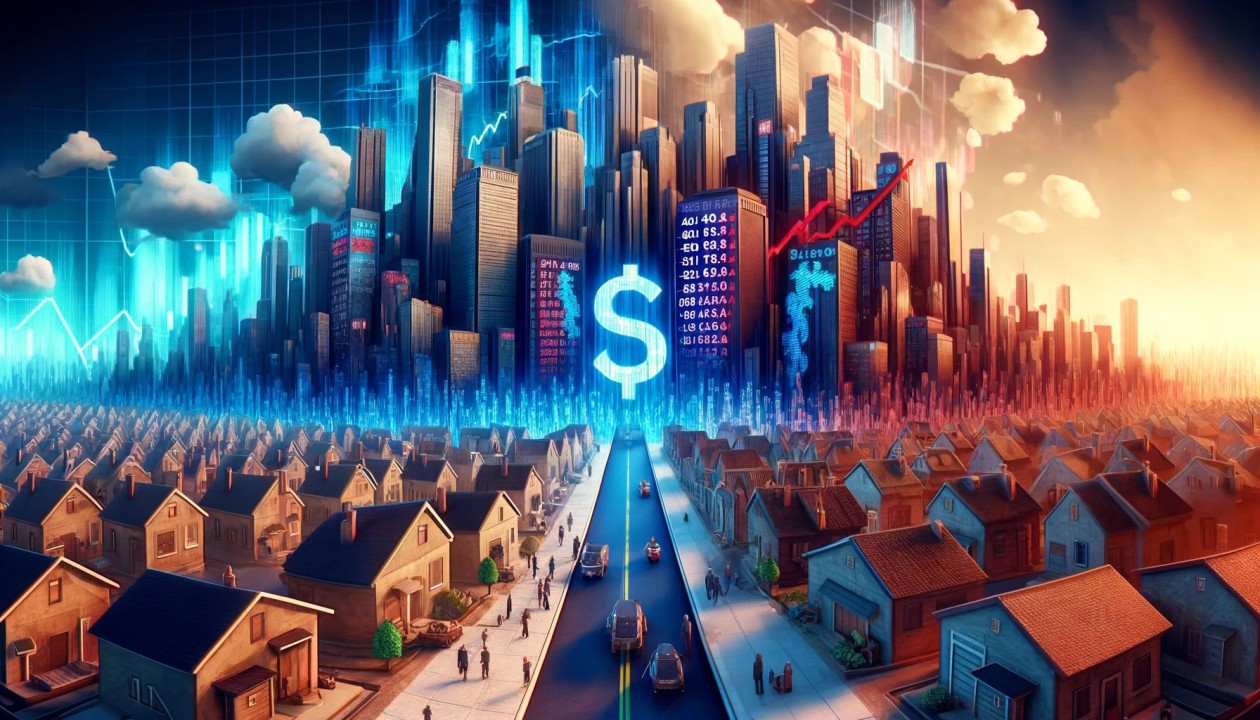
What Is Quantitative Easing and How Does It Work?
By Michael Maharrey, Money Metals Exchange
You've probably heard of quantitative easing (QE) in conversations about Federal Reserve monetary policy. But what exactly is QE and how does it work?
Quantitative easing is considered an extreme form of monetary policy reserved for use during a "crisis" situation.
The Fed typically targets the federal fund rate (the interest rate used when banks borrow money from each other) to dictate monetary policy. During an economic downturn, the central bank lowers interest rates in an effort to stimulate borrowing and increase economic activity. But if the Federal Reserve pushes rates to zero and the economy continues to lag, it may turn to quantitative easing.
In a QE operation, the Federal Reserve buys securities (primarily U.S. Treasuries and mortgage-backed securities) on the open market with money created out of thin air. This is sometimes referred to as "money printing." Of course, the Fed isn't running off $100 bills in the basement of the Eccles Building. It's more like using a debit card when no money is in the account. With a few keystrokes, the central bankers at the Fed transfer money that never existed until that moment to a bank or financial institution in return for securities.
The central bank then holds these assets on its balance sheet having injected the newly created money into the banking system. The effect is to increase the money supply, incentivize borrowing, and drive interest rates lower. Banks can take this newly minted cash and make loans. This increases overall liquidity in the financial system and theoretically stimulates lending, boosting the broader economy.
A secondary effect is to monetize federal government debt. In effect, QE turns Uncle Sam's debt (Treasury notes and bonds) into cash. This enables the U.S. government to borrow more than it otherwise could under normal market conditions.
In effect, the Fed buying Treasuries on the open market creates artificial demand for those bonds. This drives the price higher and yields lower. This lowers the U.S. government's borrowing costs.
Theoretically, QE is a temporary operation. Once the crisis passes, the Fed shrinks its balance sheet by selling securities and soaking up excess liquidity in the economy. This is called quantitative tightening (QT) or simply balance sheet reduction.
It hasn't played out that way.
When Ben Bernanke launched the first round of QE at the onset of the Great Recession, he assured Congress that the Fed was not monetizing debt. He said the difference between debt monetization and the Fed’s policy was that the central bank was not providing a permanent source of financing. He said the Treasuries would only remain on the Fed’s balance sheet temporarily. He assured Congress that once the crisis was over, the Federal Reserve would sell the bonds it bought during the emergency.
That never happened.
Through three rounds of quantitative easing after the 2008 financial crisis, the Fed increased its balance sheet by nearly $4 trillion, pushing it to just over $4.5 trillion. That was nearly $4 trillion in new money created out of thin air and injected into the economy.
The Fed made a half-hearted effort to decrease its balance sheet in 2018, but it didn't last long. The economy got shaky and the stock market crashed in the fall of that year and the central bank went right back to QE. When the Fed pivoted, there was still over $3.7 trillion on the balance sheet.
The Federal Reserve launched a massive quantitative easing operation during the pandemic, adding close to $5 trillion more to the balance sheet.
Despite over a year of QT, the balance sheet was still at nearly $7.5 trillion in the spring of 2024.
Quantitative easing has a dark side -- inflation.
Keep in mind, inflation properly defined is an increase in the money supply. So, when the Fed creates money out of thin air, it is driving inflation.
Inflation can manifest in many ways. During the Great Recession, banks tended to hold onto the newly created money, keeping it in the financial system. Inflation primarily manifested in asset bubbles, especially in the stock market. But during the pandemic, the federal government showered the population with stimulus checks causing inflation to show up in consumer prices.
The overall long-term impact of QE is overwhelmingly negative. It distorts interest rates, incentivizes massive levels of debt, creates misallocations of economic resources, and blows up bubbles throughout the economy. Eventually, the bubbles burst and the debt becomes unsustainable, leading to a bust.
But given the Fed's track record, it hasn't learned its lesson. It will almost certainly go back to QE when the next crisis arises.
Originally Published on Money Metals Exchange.